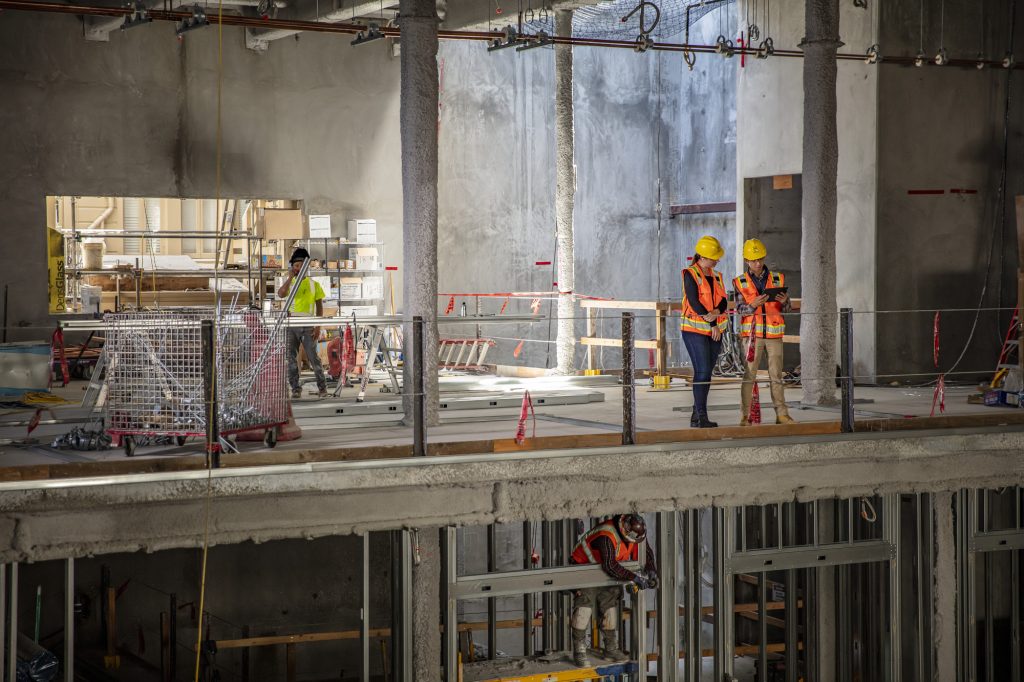I read recently that there are around $1.36tn of building projects underway across the Middle East – that’s quite some construction boom (CBRE). As built environments across Middle Eastern and North African (MENA) countries continue to expand and develop, so does the need for increasing efficiencies in construction processes.
In this ever-evolving Architecture, Engineering, and Construction (AEC) sector, Building Information Modelling (BIM) has emerged as a transformative force. BIM has become an in-demand tool which has proven to energise the construction sector, enabling the digital management and design of buildings and engineering processes.
By integrating data and fostering interdisciplinary coordination, BIM streamlines construction processes, reduces costs, and enhances sustainability. It facilitates efficient collaboration, improved decision-making, and enhanced project outcomes. It serves to enhance workflows and mitigate risks across the entire lifecycle of a construction project.
There is evidence aplenty which shows the construction landscape can be transformed by leveraging digital technologies. Something which is arguably critical in a multi-trillion dollar market.
If digital technologies can make such a difference, why aren’t stakeholders across the AEC sector in MENA using them as a matter of course?
Good question. Easy to answer?


Actions to address this digital conundrum were agreed by participants in a recent roundtable organised by KnowledgePoint.
What do they suggest?
- Create a new identify for AEC in the region: work in partnership with engineering institutes, industry and academia to recognise the importance of AEC to the growth of the region. Use the adoption of technology as a way to revitalise the sector. Engineering institutes and standardisation are key, ensuring consistent practices, enhanced collaboration, and improved project outcomes.
- Develop and retain the region’s talent: investing in and retaining the region’s talent is critical. Encouraging investment in education, creating attractive career opportunities, fostering innovation ecosystems, and strengthening regional collaborations can help retain and harness the potential of skilled professionals, driving economic growth and stability.
- Cultivate a culture for BIM adoption: spread awareness about the importance of BIM implementation and make it the norm for AEC. Foster a culture that values BIM, provides learning opportunities, and encourages the adoption of BIM as a standard practice. Provide training sessions, consultancy missions, and educational programs to promote learning and understanding.
- Incorporate existing building stock into BIM practice: recognise that not everything is new, and therefore acknowledge the need to capture digital information relating to existing buildings and infrastructure. Develop strategies to develop digital information for built assets that lack proper documentation. Focus on the digitisation of facilities management (FM) to maximise the benefits of BIM in both new and existing structures.
- Advocate to mandate BIM: encourage governments to create frameworks to mandate BIM. Promote the use of BIM as a core requirement on projects which can improve efficiency, collaboration, and data-driven decision-making across the construction ecosystem. Reiterate the value BIM can offer to government priorities.
- Engage the education sector: explore collaborations between industry with the education sector to develop a learning path for BIM implementation. Offer training sessions and consultancy projects. Explore ways to incorporate BIM into the curriculum of architecture, engineering, and construction programs.
- Define your vision and clear plan to get there: establish specific goals and a long-term vision for the implementation of BIM. Determine what you want to achieve, focusing on improved complexity management, design quality, error reduction, customer satisfaction, and stakeholder buy-in. Create a detailed plan outlining the steps required to reach your BIM goals. Evaluate your current processes, identify areas that need improvement, and allocate resources for training, software acquisition, and the development of standards and templates.
- Invest in training and development: recognise that training is crucial for the widespread adoption of BIM. Allocate resources for training staff members and acquiring the necessary skills and knowledge to effectively utilise BIM tools and software. Make sure the training is tailored to meet the needs of each member of the team, reflecting the role they perform.
- Embrace certification and licencing programs: in the digital economy, AEC employers place significant emphasis on recruiting people with relevant technical qualifications. The validation of skills through certification has significance for AEC professionals wherever they are on their career pathway. Certification is a marker of competence, ensuring a proven minimum baseline of skills has been met.
- Embrace BIM as an investment: change the narrative, view BIM implementation as an investment rather than an expenditure. Understand that implementing BIM is an investment in the future efficiency and effectiveness of your organisation. Emphasise the long-term benefits and value it brings, rather than viewing it as a mere expense. Detail how the initial costs and efforts will lead to long-term benefits, including improved efficiency, time savings, and better project outcomes.
What do you think? Do you agree?
As countries across the region continue to pursue diversification strategies, it is clear that construction is going to play a significant role.
The integration of BIM as a standard practice has the potential to promote industry-wide innovation, productivity, and economic growth. It can play a part in shaping a future where the built environment reflects the aspirations of the region and meets the needs of its communities.
What are you going to do first?
Why not check out what our experts concluded? You’ll find their manifesto for change here: Actions for the adoption of Building Information Modelling (BIM) in the Middle East and North Africa: Conclusions from an expert roundtable.
Tomas Karlsson is the senior manager of channel services at KnowledgePoint. This means he oversees the management of outsourced extended enterprise learning programmes, recruiting and supporting global network of training providers on behalf of clients. These programmes include developing resources to support sector engagement by training network partners. The latest resources produced as part of KP’s work with Autodesk can be found here.